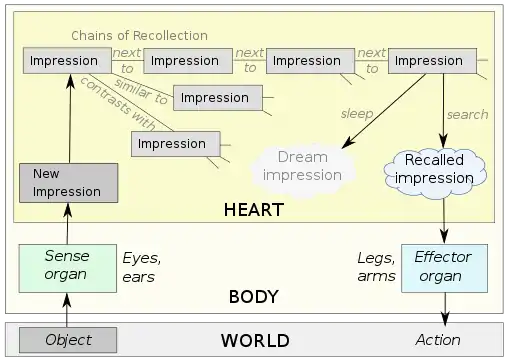Laws of association
In psychology, the principal laws of association are contiguity, repetition, attention, pleasure-pain, and similarity. The basic laws were formulated by Aristotle in approximately 300 B.C. and by John Locke in the seventeenth century. Both philosophers taught that the mind at birth is a blank slate and that all knowledge has to be acquired by learning. The laws they taught still make up the backbone of modern learning theory.[1][2]

Laws of association in Aristotle's psychology. Impressions are stored in the seat of perception, linked by the laws of similarity, contrast, and contiguity.
David Hartley taught that contiguity is the main law of association, and, believing that it is the primary source, Hartley ignored David Hume's law of resemblance (Warren, 1921).[1]
References
- Laws of Association - Dictionary of Cognitive Science - Dr. Michael R.W. Dawson and Dr. David A. Medler. Retrieved 8 March 2012.
- Sorabji, R. (2006). Aristotle on Memory (2nd ed.). Chicago: University of Chicago Press. p. 54.
And this is exactly why we hunt for the successor, starting in our thoughts from the present or from something else, and from something similar, or opposite, or neighboring. By this means recollection occurs...
This article is issued from Wikipedia. The text is licensed under Creative Commons - Attribution - Sharealike. Additional terms may apply for the media files.